If the blood test is a familiar phrase that we have more or less heard about. But the 32-indicator blood test perhaps not everyone understands what this test is? What is the meaning? In fact, the 32-index blood test results, will provide important information, reflect the abnormalities of the patient's body, thereby helping the doctor to promptly give an effective diagnosis and treatment.
What Is A 32 Indicator Blood Test?
The 32-indicator blood test is also known as the preliminary blood cell analysis total test.
This is a test done with the purpose of helping doctors assess the health status of the patient by initially detecting disorders of the body, related to the number of cells in the blood cells. red blood cells, platelets, or white blood cells.
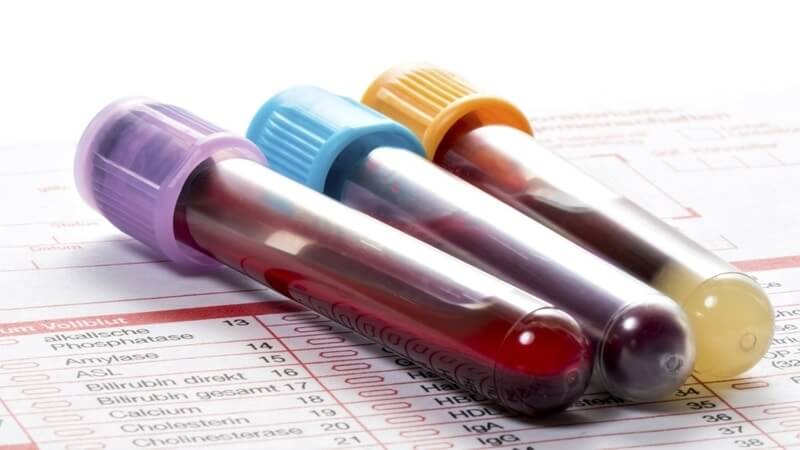
Not only that, but this test also has the ability to evaluate conditions related to common diseases such as infection, anemia, and a number of other related disorders.
What does a 32-indicator blood test include? The total cytology assay will include analyzing the following relevant metrics:
- The number of blood cells is white blood cells, platelets, red blood cells per ml of blood.
- Calculate the volume of red blood cells in 1 liter of blood.
- Measure the size of red blood cells and the average size of red blood cells.
- Dependent indicators are MCHC, MCV, MPV, MCH, PCT, RDW, PDW.
- Determined the specific percentage of each type of leukocyte in the peripheral blood sample.
- The amount of hemoglobin present in red blood cells.
When 32 Indicator Blood Test Is Required?
The 32-index blood cell total assay is one of the most basic and popular tests, so you can do it at any time for a regular annual checkup.
However, there are some cases, doctors will prescribe patients need a 32-indicator blood test to check as follows:
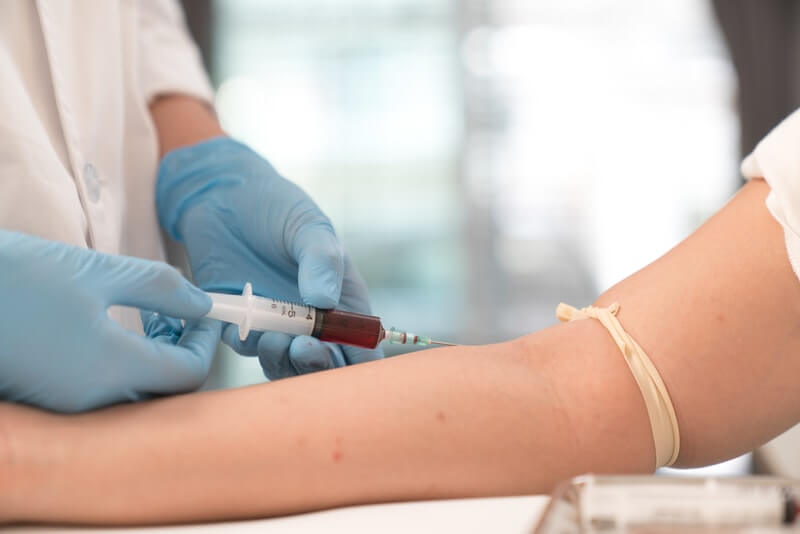
- Patients with anemia.
- Where a doctor suspects the patient is allergic or has signs of a parasitic infection.
- The patient is suspected of having diseases related to blood cells.
- The patient is in the treatment phase and needs to monitor disease progression related to blood cells.
Meaning of 32-Indicator Blood Test
1. Red blood cell line
Through a 32-indicator blood test, based on a hemoglobin count, a doctor can determine if a patient is suffering from anemia. What is the level of anemia if you have anemia?
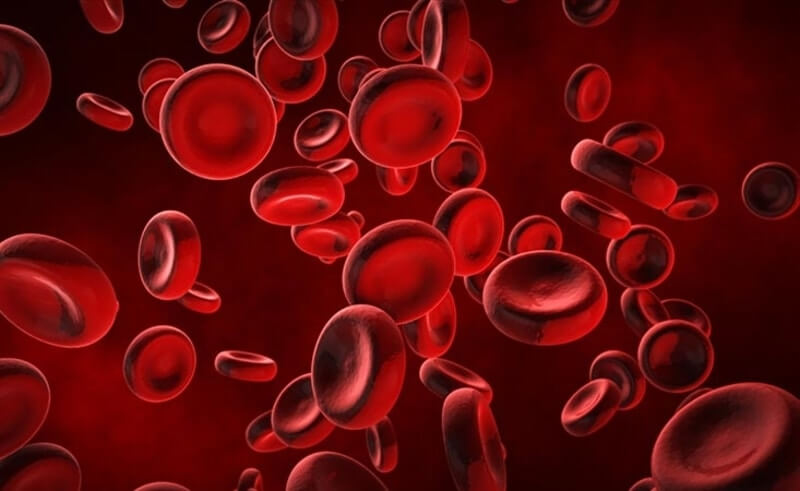
Based on the average volume of small or large MCV red blood cells, your doctor may classify anemia as follows:
MCV can be increased when the patient falls into one of the conditions such as vitamin B12 deficiency, folic acid deficiency, heavy alcoholism, liver disease, bone marrow fibrosis.
Conversely, if the MCV is reduced, the patient may suffer from chronic anemia, iron deficiency, thalassemia syndrome, lead poisoning …
In order to be able to classify a patient with normal or hypochromic anemia, the doctor will base the average hemoglobin count of MCH RBCs and combine the result with the mean red blood hemoglobin concentration. MCHC as the basis of diagnosis.
MCHC and MCH will be reduced in the case of patients with thalassemia, iron deficiency anemia …
In addition, when based on the results of blood tests, more specifically based on the number of hemoglobin, red blood cells, the volume of red blood cells will help doctors diagnose polycythemia vera.
In particular, in the case of patients with heart disease, lung disease, dehydration, high fever, the doctor may order a 32-indicator blood test to check whether the number of red blood cells is in a normal state or increase. high.
2. White blood cells
Through the test of the 32 index formula, it will be possible to quantify the number of leukocytes in the patient's blood. If the white blood cell count is problematic, based on this result, 1 of the 2 conditions will be reflected as follows:
Reduced number of leukocytes: Depends on the type of leukocyte that has different appropriate names such as leukopenia, lymphopenia, neutropenia …
Increased number of leukocytes: Similar to leukocytes decreased when the number of leukocytes increased is also divided into many different categories such as eosinophilia, lymphocytosis, neutrophils …
When the number of leukocytes is mutated, it can be caused by many different causes, typically when the patient has heavy metal poisoning (caused by elevated neutrophils), allergies or Parasitic infection (caused by an increase in eosinophils), or cases of blood cancer also causes the number of leukocytes to increase dramatically.
3. Platelet flow
Thanks to the total blood cytology analysis it will be possible to determine the number of platelets in the patient's blood. Based on this result, the doctor can find out the exact cause of the disease.
Reduced platelet count
In the event of a decrease in platelet count, this may be the result of a number of conditions that are not treated promptly, causing a problem with platelet production or an increase in platelet destruction.
In addition, if the patient's body produces antibodies to fight platelets, this is also one of the reasons that the decrease in platelet count occurs.

If the platelet count in the blood is lower than normal, the patient may experience bleeding, which in turn increases the risk of bruises on the body.
The number of platelets increases
When spontaneous thrombocytosis or patients with bone marrow diseases, after splenectomy, this can be the cause of the number of platelets in the blood increased dramatically.
If this happens, it can cause a blockage of blood vessels in some cases and early intervention is needed to avoid more serious consequences.
How to Read Blood Analysis Total Test Results
How should the biochemical blood test indicators be understood? To better understand the results, you need to seek specific advice from a specialist. Here are the results of the metrics as follows:
RBC indicator
Normal values fluctuate in the range: 3.8 – 5.0 T / L.
- For men: 4.2 – 6.0 T / L.
- For women: 3.8 – 5.0 T / L.
If the RBC is higher than normal: This is a sign that the patient has anemia or is dehydrated.
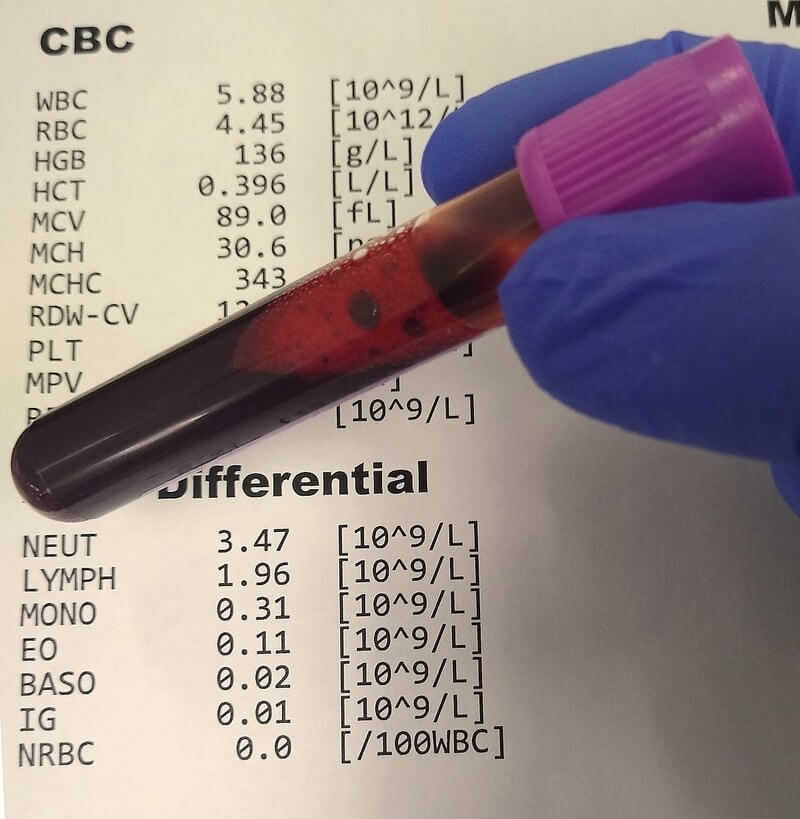
If the RBC is decreased: This is an indication that the patient is anemic.
HBG indicator
Hemoglobin is known as a protein molecule in red blood cells, responsible for bringing oxygen from the lungs to supply to the exchange organs, and will receive CO2 from the rotating transporters. back to the lungs to exchange and expel CO2 from the body, to continue receiving new amounts of oxygen. Besides, hemoglobin is the substance that makes red blood cells.
Regarding the normal value of hemoglobin, it is classified by sex as follows:
- For men: 130 -170 g / L.
- For women: 120 – 150 g / L.
If the hemoglobin index is high: This is a sign that the patient is dehydrated or is having problems related to the heart, lungs …
If the hemoglobin index drops: This will be a sign of anemia, bleeding, or a case caused by a hemolytic reaction.
HCT indicator
Normal values for the HCT index are as follows:
- For men: 0.335-0.450 L / L.
- For women: 0.336-0.450 L.
The HCT index increases in the following cases: People with smoking habits, allergies, chronic obstructive pulmonary disease, erythrocytosis, decreased blood flow, coronary artery disease …
Reduced HCT: Patients with anemia, blood loss, or in pregnancy.
MCV indicator
Normal values of MCV are: 75 – 96 fL.
The MCV index increases in the following cases: Patients with vitamin B12 deficiency, folic acid deficiency, erythrocytosis, liver diseases, hypothyroidism, bone marrow fibrosis.
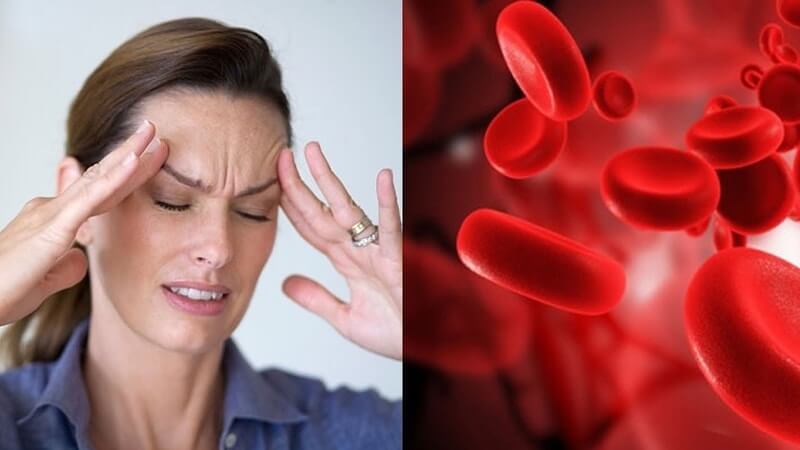
The MCV index decreases in the following cases: Patients with anemia are found in chronic diseases, iron deficiency in the blood, lead poisoning, chronic kidney failure …
MCH indicator
Normal values for MCH are between 24 and 33pg.
MCH is increased in the following cases: Patients with erythrocytic polymorphic anemia, the appearance of cold-agglutination factors, erythrocytes due to severe heredity.
MCH decreases in the following cases: Patients with iron deficiency, anemia, regenerating anemia, or general anemia.
MCHC indicator
To be able to calculate the value of the MCHC index needs to be based on the exact value of the hematocrit and hemoglobin. Specifically, the MCHC index value is normal when it ranges from 316 to 372 g / L.
An elevated MCHC is a sign of a genetically severe circular erythrocytosis, a patient with normal polycythematous anemia, or the presence of cryogenic agglutination factors.
RDW indicator
Normal values for RDW ranged from 10-16.5%.
The case of a high RDW shows that the distribution of red blood cells is in a state of increasing change. Accordingly, the size of red blood cells is also much different, uneven.
Besides, when the RDW index exceeds the permitted level, it often occurs in the case of anemia patients.
NEUT indicator
Normal values of NEUT are between 43 and 76%.
If the neutrophil ratio is higher than normal, it will be a sign of the patient's blood infection.
In addition, the NEUT index may increase in cancer, acute infections and decrease in cases of viral infection, aplastic anemia, immunosuppressive drugs …
Hopefully, through this article, have shared with you useful information about what the 32-indicator blood test is and what the results of this test mean. However, to better understand the test results, as well as get the right advice and treatment, you need to consult your doctor.
For more information about our test menu and price list, please click here.
The site cannot and does not contain medical advice. The medical information is provided for general informational and educational purposes only and is not a substitute for professional advice. Accordingly, before taking any actions based upon such information. We encourage you to consult with the appropriate professionals.

 1900 1717
1900 1717 